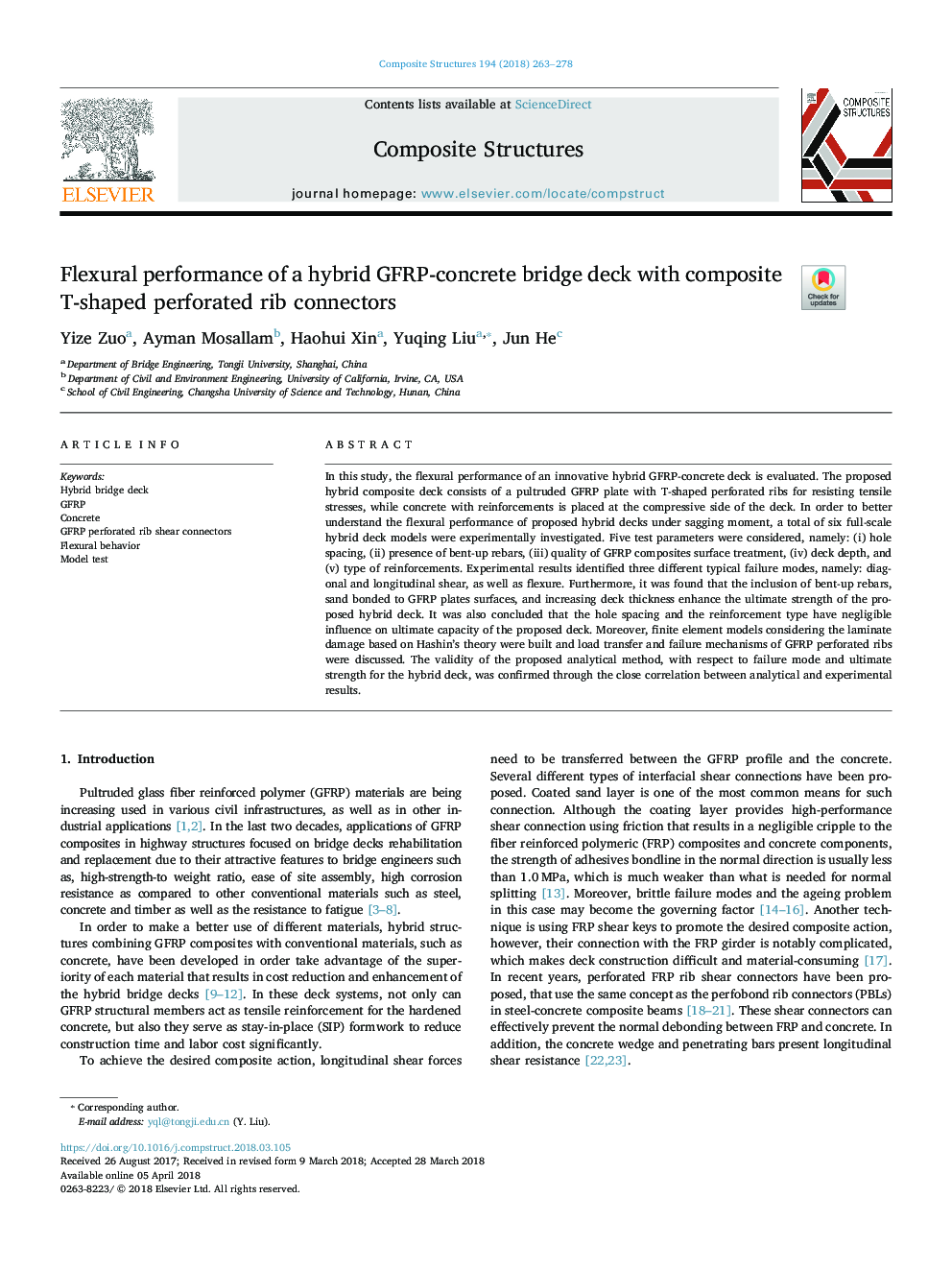| Article ID | Journal | Published Year | Pages | File Type |
|---|---|---|---|---|
| 6703511 | Composite Structures | 2018 | 16 Pages |
Abstract
In this study, the flexural performance of an innovative hybrid GFRP-concrete deck is evaluated. The proposed hybrid composite deck consists of a pultruded GFRP plate with T-shaped perforated ribs for resisting tensile stresses, while concrete with reinforcements is placed at the compressive side of the deck. In order to better understand the flexural performance of proposed hybrid decks under sagging moment, a total of six full-scale hybrid deck models were experimentally investigated. Five test parameters were considered, namely: (i) hole spacing, (ii) presence of bent-up rebars, (iii) quality of GFRP composites surface treatment, (iv) deck depth, and (v) type of reinforcements. Experimental results identified three different typical failure modes, namely: diagonal and longitudinal shear, as well as flexure. Furthermore, it was found that the inclusion of bent-up rebars, sand bonded to GFRP plates surfaces, and increasing deck thickness enhance the ultimate strength of the proposed hybrid deck. It was also concluded that the hole spacing and the reinforcement type have negligible influence on ultimate capacity of the proposed deck. Moreover, finite element models considering the laminate damage based on Hashin's theory were built and load transfer and failure mechanisms of GFRP perforated ribs were discussed. The validity of the proposed analytical method, with respect to failure mode and ultimate strength for the hybrid deck, was confirmed through the close correlation between analytical and experimental results.
Related Topics
Physical Sciences and Engineering
Engineering
Civil and Structural Engineering
Authors
Yize Zuo, Ayman Mosallam, Haohui Xin, Yuqing Liu, Jun He,
